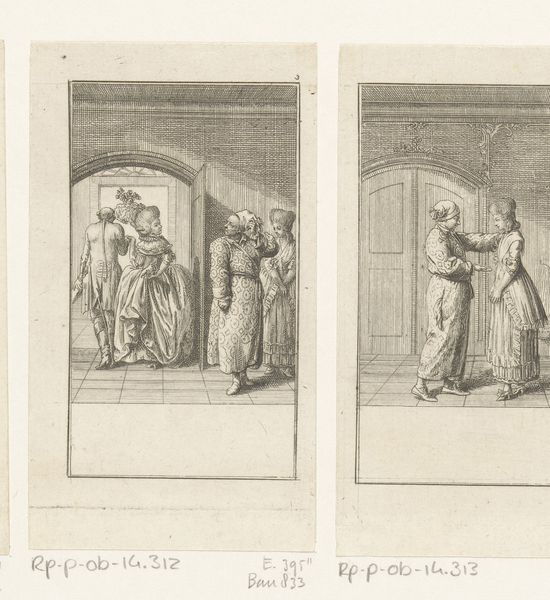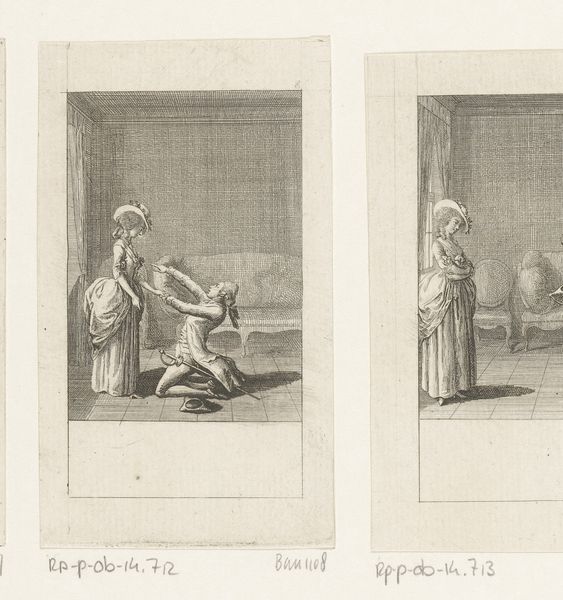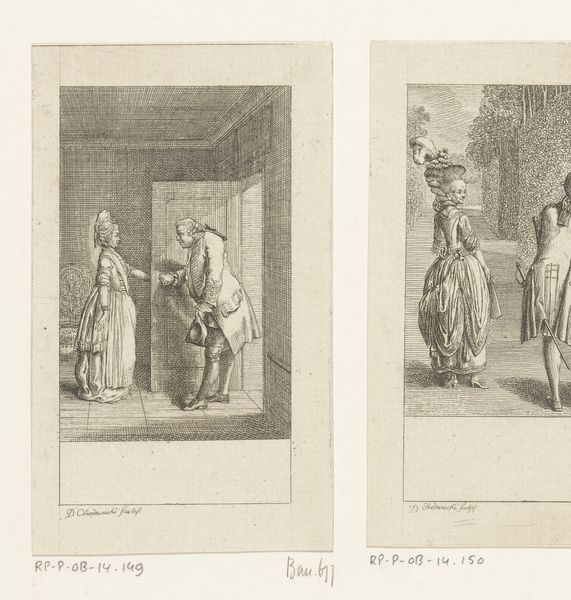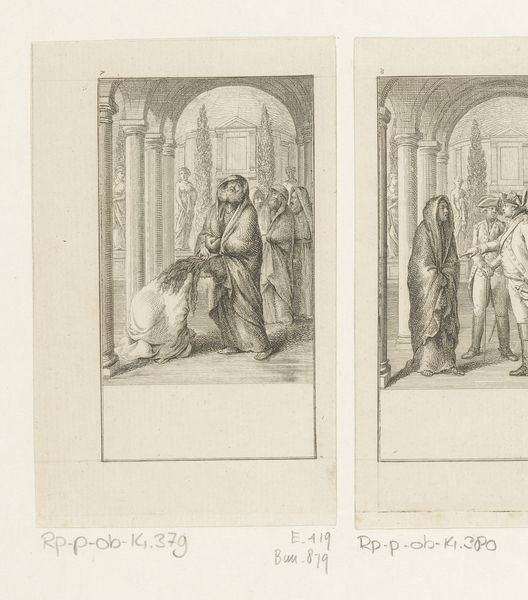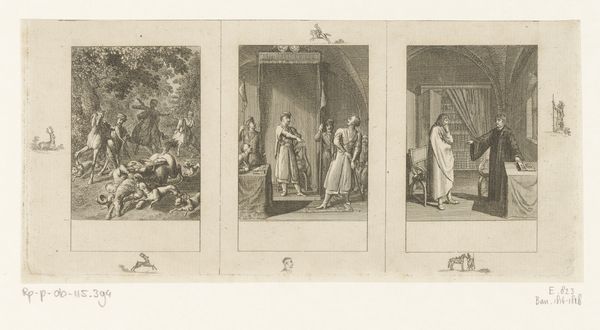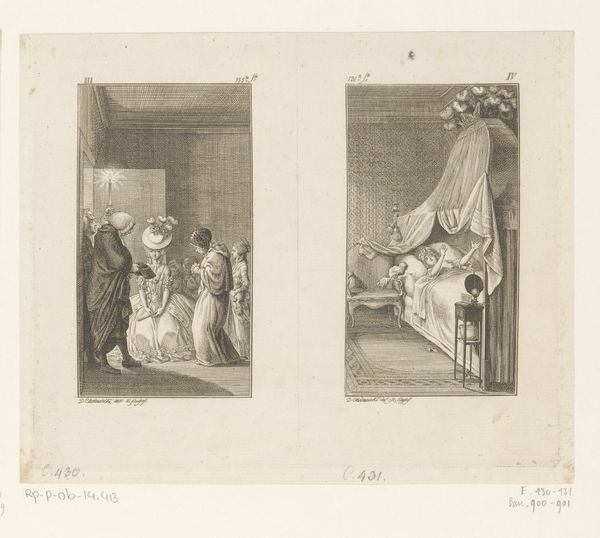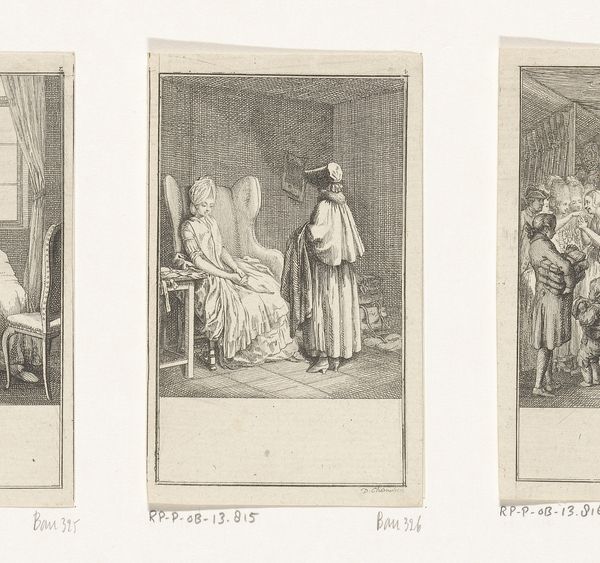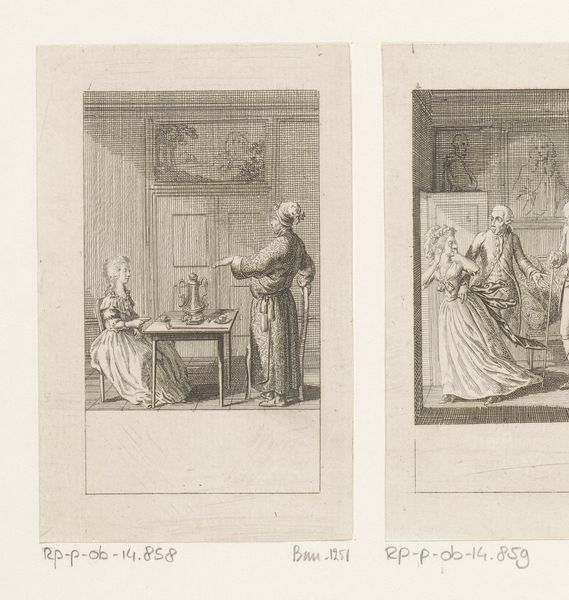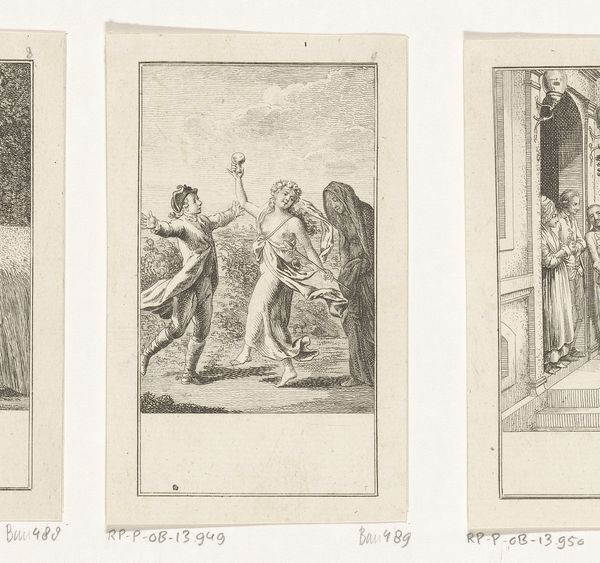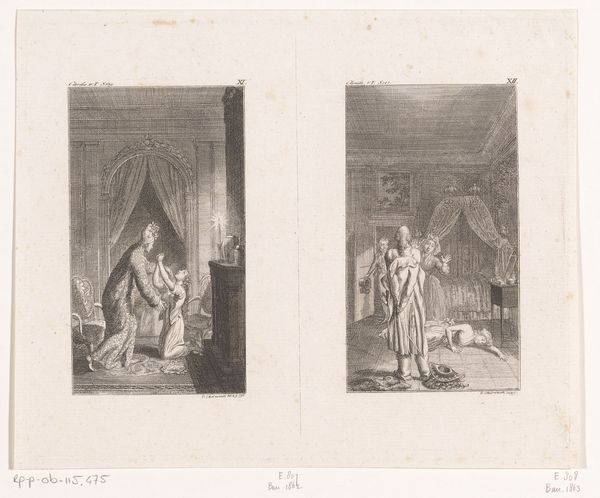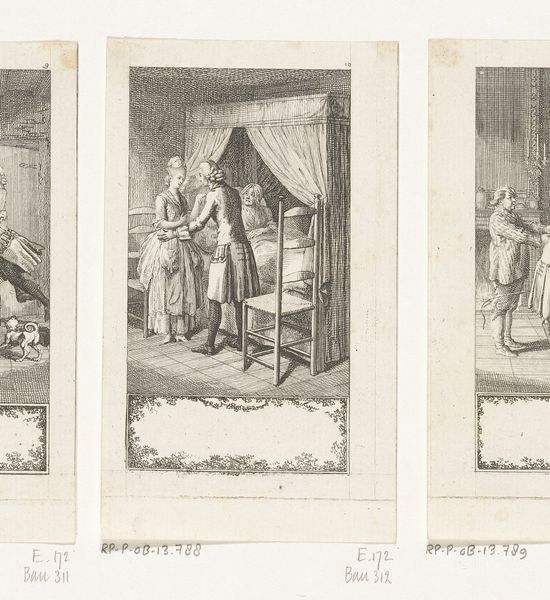
Dimensions: height 113 mm, width 71 mm
Copyright: Rijks Museum: Open Domain
Editor: This is Daniel Nikolaus Chodowiecki's 1782 print, "Supplication of the Young Brahmin," currently held at the Rijksmuseum. It’s interesting – the architectural backdrop feels classical, almost Roman, yet the title pulls me towards a different cultural context entirely. What first strikes you about this piece? Curator: The supplicant’s bowed posture immediately speaks to humility and deference. This image operates within a fascinating nexus of cultural interpretation. Notice how Chodowiecki blends neoclassical elements with the exoticized subject of a Brahmin, reflecting Europe's growing fascination with the "Orient" during the late 18th century. The cloaked figure behind the young man, standing rigidly, almost mirroring the architecture. What emotional tone do you think the image suggests? Editor: Melancholy, definitely. I can’t quite reconcile the setting with the religious implication of a Brahmin, as I understand them. It’s…confusing? Curator: Exactly! It's a confusion by design, I would argue. Chodowiecki uses this visual juxtaposition to perhaps critique, or at least question, the authority structures of both cultures. Do you see any further symbolism embedded in their postures? Editor: I see what you mean. The Brahmin’s prostration contrasted against the elder's stoicism creates a sharp distinction between obedience and authority. It feels performative almost, like a staged encounter meant for observation. Curator: Indeed. This "staging" draws upon and reinforces the symbolic weight of gesture. Such visual echoes resonate through time. I’ve learned from you to look closer at that play between contrasting cultural symbols, how these juxtapositions carried a certain political message. Editor: I see that, and I appreciate you illuminating the hidden layers. I now recognize a commentary on power dynamics beyond just the religious narrative.
Comments
No comments
Be the first to comment and join the conversation on the ultimate creative platform.
